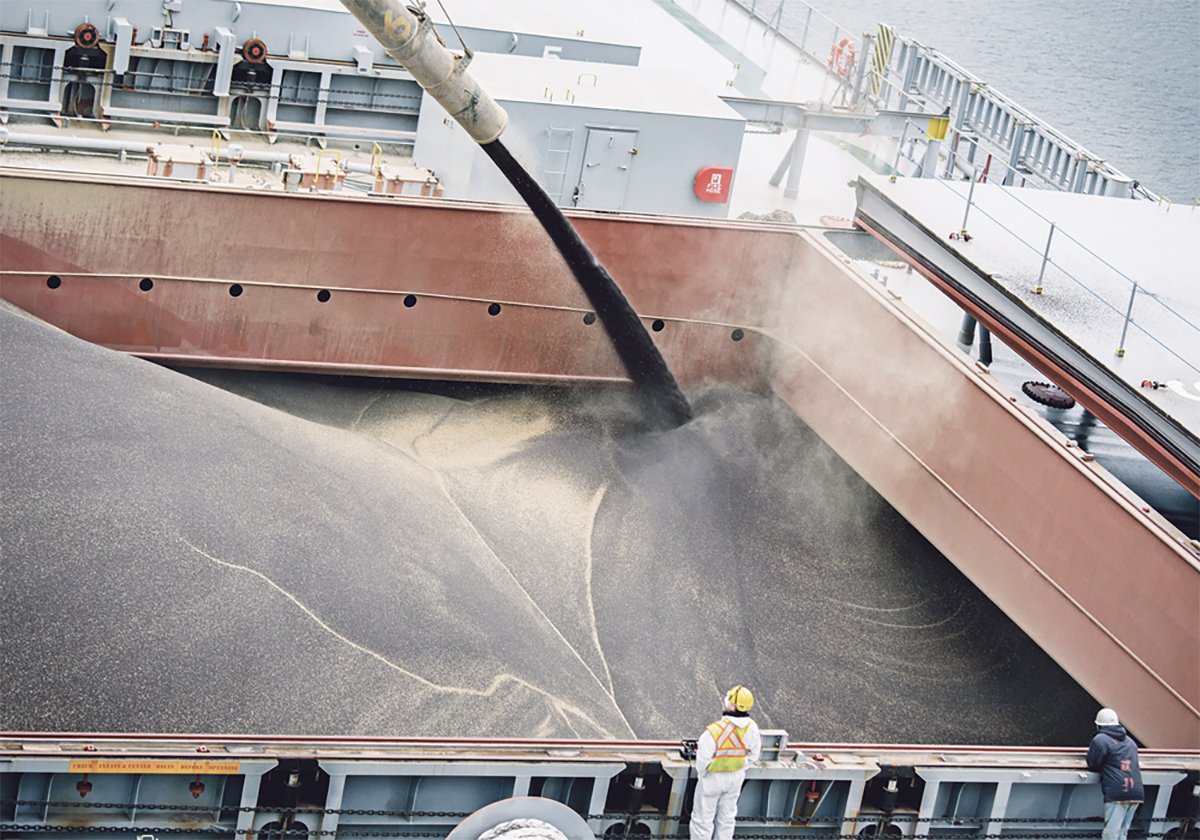The new crop wheat outlook is pretty grim, but there is potential for old crop wheat prices to appreciate a little, says an analyst.
Marlene Boersch, managing partner with Mercantile Consulting Venture, believes old crop prices have the potential to climb another 25 to 35 cents per bushel.
She advised growers to sell the balance of their old crop wheat at prices of $7.25 a bushel or better.
“There is some potential nearby, but don’t wait too long,” she told delegates attending CropSphere 2019.
The main reason for her optimism is that Russia is running out of exportable supplies.
Read Also

Exports off to a slow start after last year’s torrid pace
Canadian grain, oilseed and pulse exports are off to a slow start, but there are some bright spots, according to the Canadian Grain Commission’s most recent weekly export data report.
Russia got off to a “blistering start” to the 2018-19 campaign with exports exceeding four million tonnes per month in August, September and October.
However, it is starting to price itself out of wheat tenders as exporters expand the area from which they are sourcing product. Boersch expects exports will fall to 1.5 million tonnes in January.
“They’re having some logistics problems now getting the stuff from further away into the ports,” she said.
That is going to push more business to North America.
Canadian wheat exports are already 15 percent higher than they were last year. Boersch thinks exports will exceed Agriculture Canada’s 18 million tonne estimate, resulting in a smaller carryout.
Her durum outlook was short and not-so-sweet. She said Canada is on pace for 3.4 million tonnes of exports rather than Agriculture Canada’s 4.3 million tonnes.
“That is very, very concerning because I think the carryout could be a lot higher than the 1.9 million (tonnes) they expect,” she said.
“I don’t see a lot of hope for recovery on the durum, unfortunately.”
By contrast, spring wheat demand has been booming. U.S. hard red spring wheat exports are expected to reach 8.2 million tonnes in 2018-19, up 31 percent from last year. And that is despite losing the Chinese market.
Boersch said a lot of growers have the impression that wheat is a boring, stagnant crop but that is not the case.
Global wheat exports have been rising steadily the past two decades to 179 million tonnes in 2018-19 from 101 million tonnes in 1998-99, a 177 percent increase.
“It’s not a stagnant market, it’s just a full market,” she said.
Global wheat ending stocks are forecast at a burdensome 264.2 million tonnes in 2018-19, but China accounts for 47 percent of that stockpile and it won’t be exporting any of that.
The good news is ending stocks are expected to fall by about four percent this year.
There are plenty of positive fundamentals in the wheat market. For instance, global food wheat consumption has increased 90 million tonnes over the past decade, while feed consumption is up 16 million tonnes.
One concern she has is slumping oil prices, which is reducing purchasing power in key wheat markets such as Iran, Iraq and Saudi Arabia.
“We’ve seen some of those effects with Egypt having trouble opening lines of credit,” said Boersch.
When she looks to 2019-20, Boersch expects a six percent increase in spring wheat acres and a 10 percent decline in durum.


















